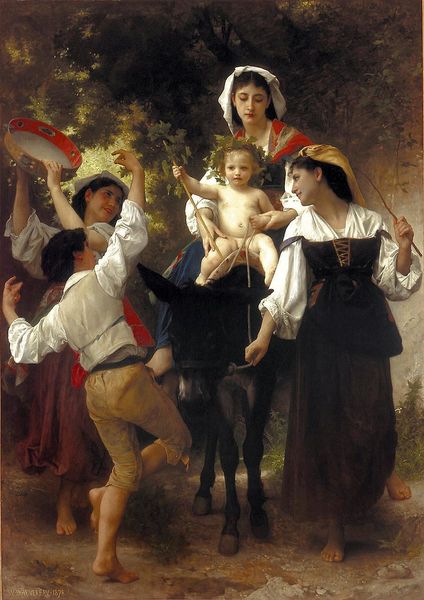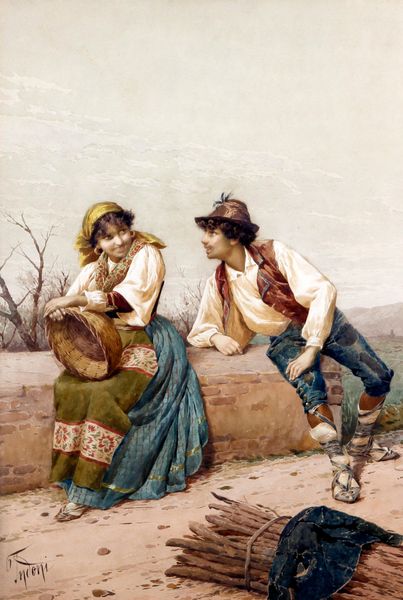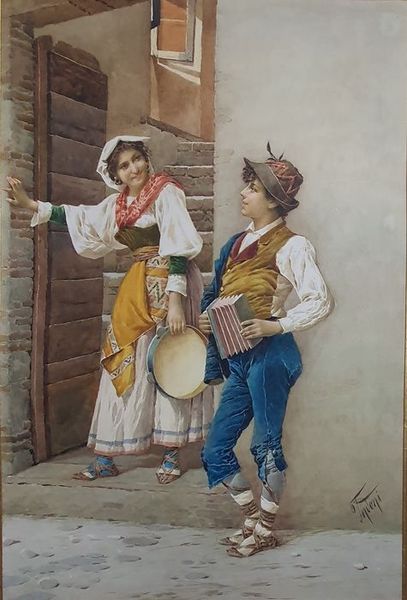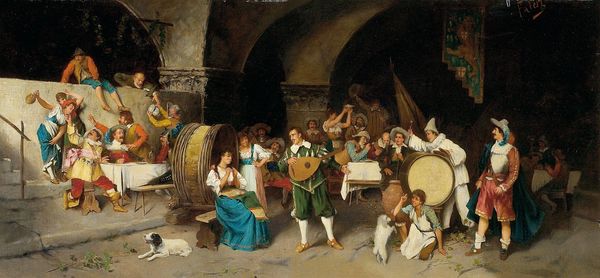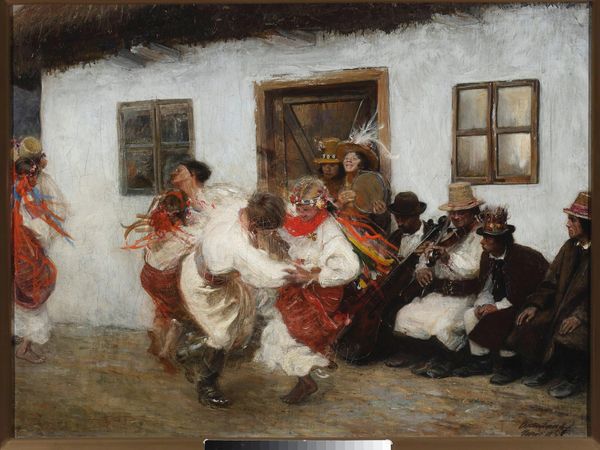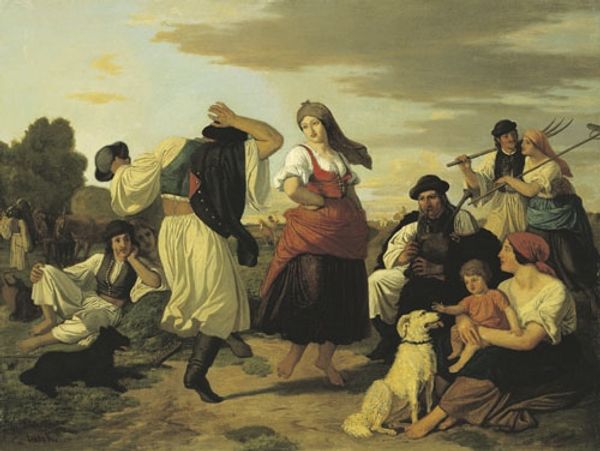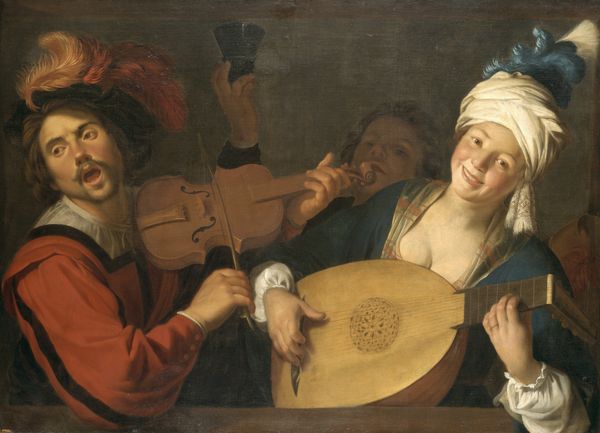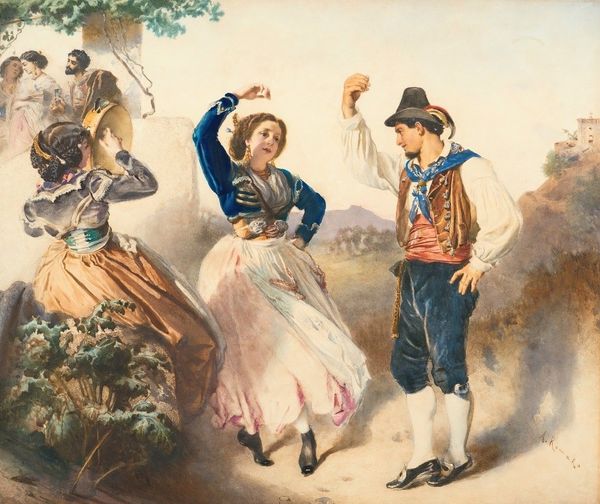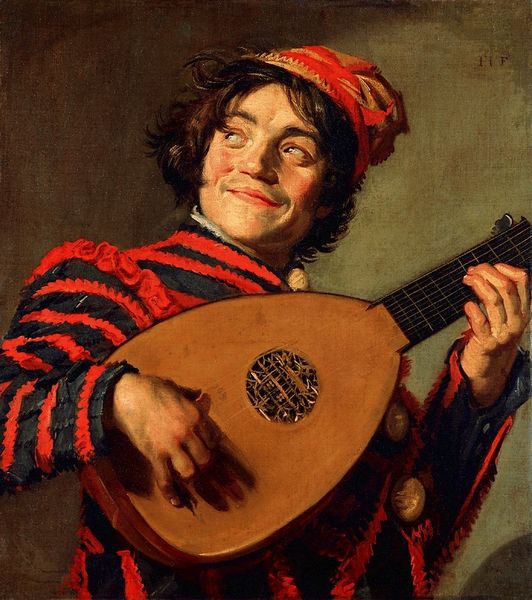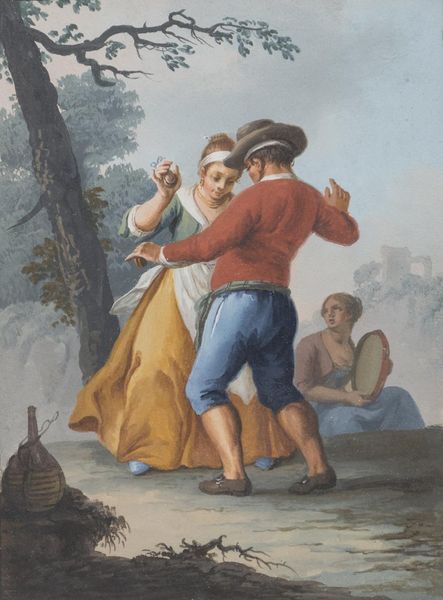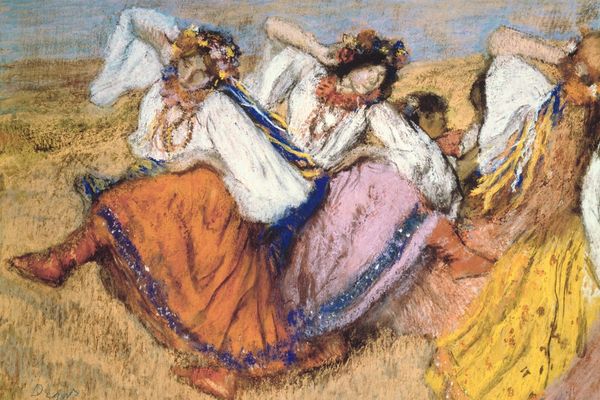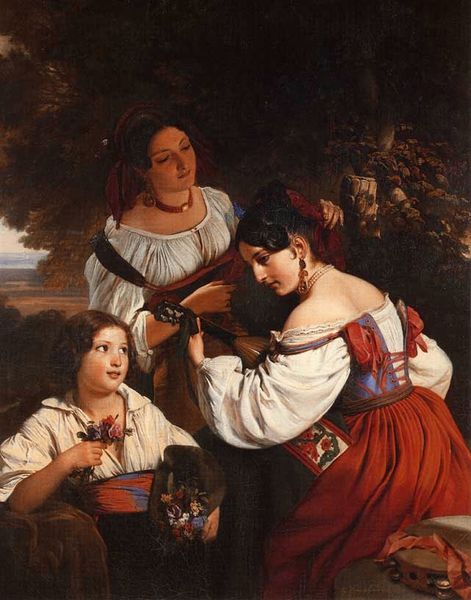
Dimensions: 97 x 78.5 cm
Copyright: Public domain
Anton Romako painted these street musicians, we think, sometime in the mid-19th century. Notice the tambourine held aloft by the dancing woman. This simple instrument—a frame drum with jingling discs—resonates with ancient echoes. Its origins trace back to ecstatic rituals in the Near East and ancient Greece, linked to fertility cults and the worship of deities. The tambourine’s vibrant sound was believed to induce trance states, connecting performers and audiences to the divine. We see depictions of tambourines in ancient art, often clutched by maenads in Dionysian revelries. Over time, its symbolic weight shifted. While losing its direct religious connotations, the tambourine became a symbol of festivity, celebration, and folk culture. The tambourine continues to appear in art and life, its presence reminding us of the enduring human need for rhythm, movement, and communal joy. The cyclical nature of symbols is relentless; they resurface, adapt, and find new life in each era, carrying traces of past meanings into the present.
Comments
No comments
Be the first to comment and join the conversation on the ultimate creative platform.
